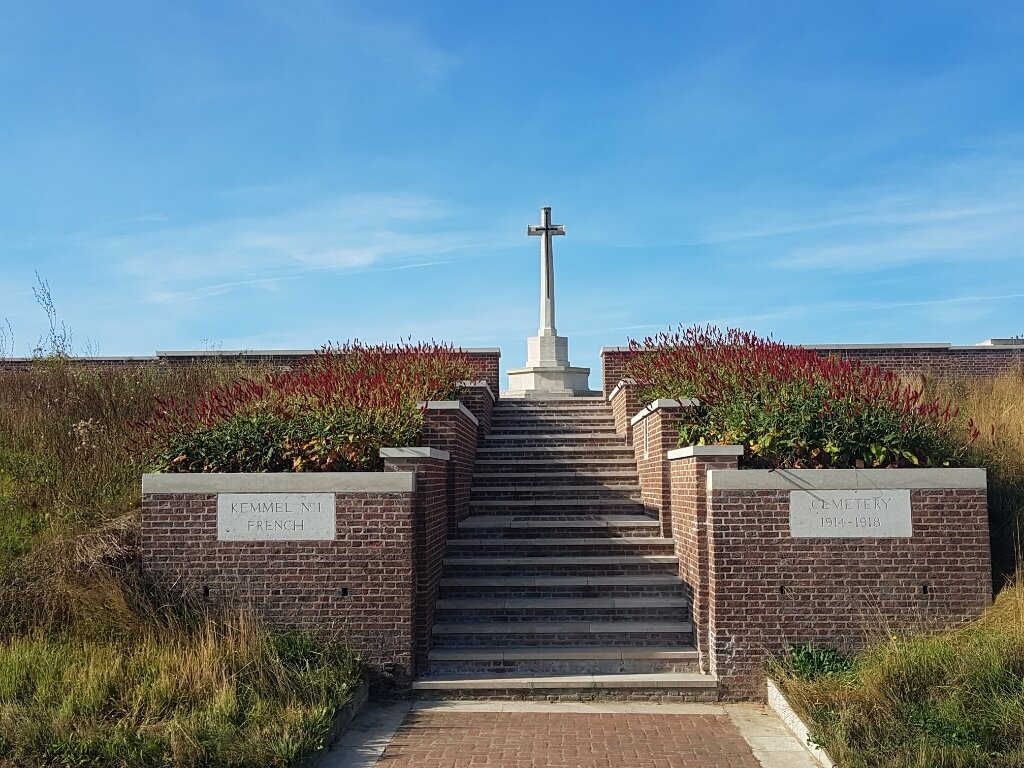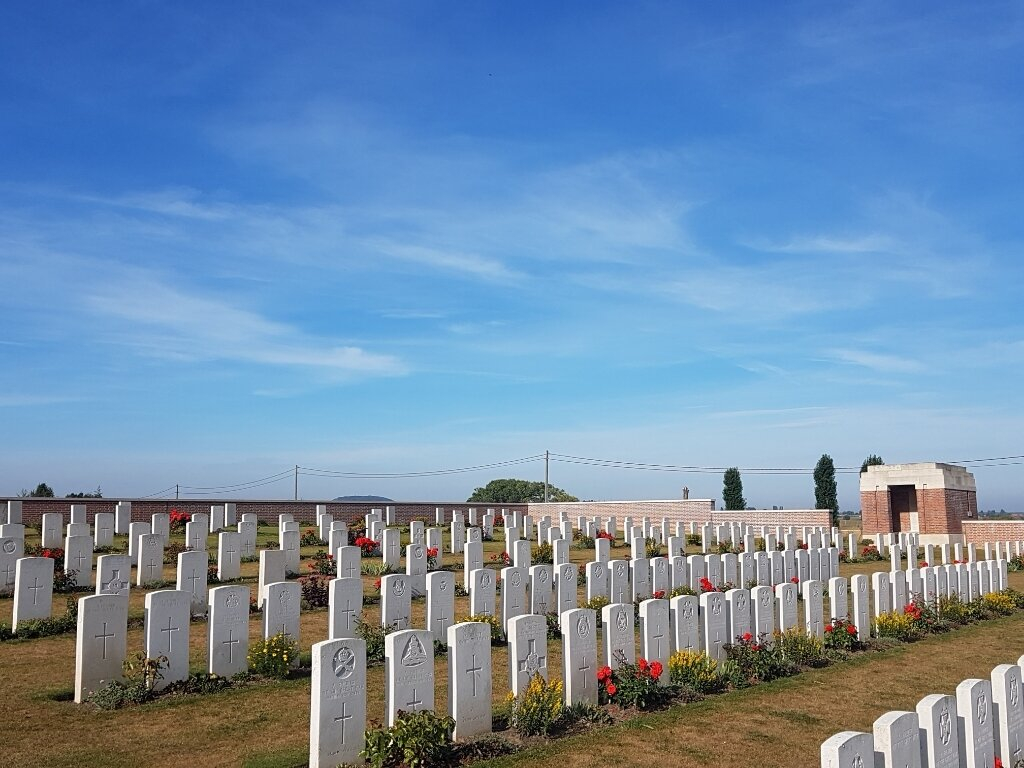Kemmel No.1 French Cemetery
- Country Belgium
- Total identified casualties 41 Find these casualties
- Region West-Vlaanderen
- Identified casualties from First World War
- GPS Coordinates Latitude: 50.80534, Longitude: 2.84073
Location information
Kemmel No.1 French Cemetery is located 6 Kms south west of Ieper town centre, on the Poperingestraat, a road leading from the Kemmelseweg, joining Ieper to Kemmel (N331). From Ieper town centre the Kemmelseweg is reached via the Rijselsestraat, through the Lille Gate (Rijselpoort), and straight on towards Armentieres (N365). 900 metres after the crossroads is the right hand turning onto the Kemmelseweg. (Made prominent by a railway level crossing). 5 Kms along the Kemmelseweg lies the right hand turning onto the Vierstraat. The cemetery lies 1 Km along the Vierstraat, on the left hand side of the road.
Visiting information
Wheelchair access to site possible, but may be by an alternative entrance. For further information regarding wheelchair access, please contact our Enquiries Section on telephone number 01628 507200.
History information
In April 1918, Kemmel was the scene of fierce fighting in which both Commonwealth and French forces were engaged. From 26 April to the end of August, the village was in German hands.
The origin of the cemetery is not known; it was found by the French Graves Services soon after the Armistice and contained Commonwealth, French and German graves. Additional Commonwealth graves were brought into the cemetery from the battlefields of the Ypres Salient and from some other burial grounds in the area (for instance, BECELAERE CHURCHYARD and BEERST GERMAN CEMETERY), as were some German burials found by the Belgian Graves Services. The French graves were removed later to the Kemmel French Ossuary, and to the French cemetery at Potijze.
The cemetery now contains 296 Commonwealth burials of the First World War, 260 of which are unidentified. There are also 94 German graves, of whom the majority are unidentified.
The cemetery was designed by Sir Edwin Lutyens.




